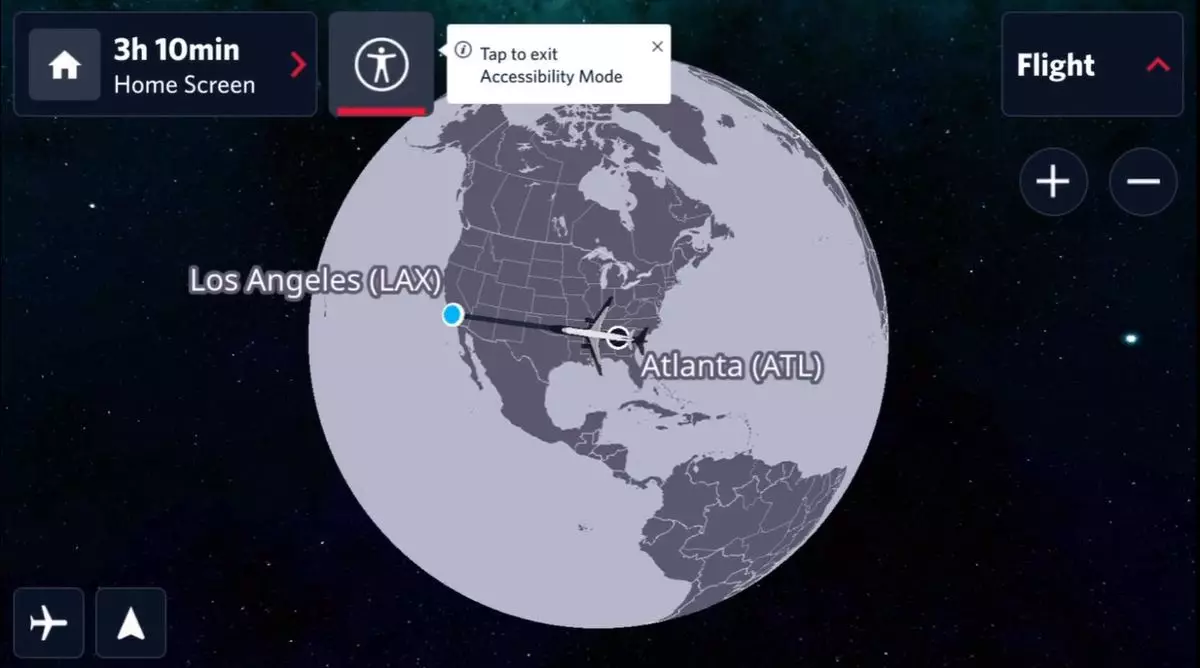In an era where inclusivity is becoming increasingly prioritized, Delta Air Lines has made noteworthy strides by introducing an accessible flight map aimed at aiding passengers with visual impairments. This initiative highlights the importance of providing equal opportunities for all travelers and showcases Delta’s commitment to enhancing the flying experience for everyone. With plans to implement this feature on over 600 aircraft by the end of the year, the airline is poised to set a new standard in accessibility within the aviation industry.
The newly introduced accessible flight map feature is not merely an alternative interface; it’s a reimagined approach tailored specifically for users with visual challenges. Delta’s managing director of customer experience, Ekrem Dimbiloglu, emphasized that nearly 50% of passengers utilize the flight map during their journeys, indicating the significance of this tool in enhancing engagement during flights. Unlike the standard flight maps that can overwhelm with data, the accessible version simplifies information, showcasing fewer cities and geographical features. This streamlined interface uses larger fonts and high-contrast colors, thus fostering a more comfortable and user-friendly experience.
Dimbiloglu expressed enthusiasm for the project’s rapid development, noting that the rollout occurred just 13 months after initial research began—a notably swift timeline within the airline industry. Furthermore, the ongoing development of a voice narration feature will further enrich the functionality of the map, providing additional support to users who may benefit from auditory cues.
Delta partnered with FlightPath3D to create this accessible technology, demonstrating the power of collaboration in driving innovation. The development process included feedback from Delta’s Advisory Board on Disability, which guided refinements to ensure that the final product effectively meets user needs. This partnership not only underscores the commitment to inclusivity but also sets a precedent for other airlines to follow suit and prioritize the needs of all passengers.
FlightPath3D’s president, Duncan Jackson, echoed this sentiment by advocating for widespread deployment of such accessible technologies across the airline industry. With approximately 400 million users annually accessing FlightPath3D’s standard offerings, extending availability to an accessible version is a vital step in making air travel more inclusive for everyone.
Delta’s introduction of the accessible flight map reflects a broader trend within the airline industry toward fostering inclusive travel. While challenges remain, initiatives like this serve as proof that substantial progress can be made by focusing on the needs of diverse populations. The airline’s approach of prioritizing user experience emphasizes that profitability doesn’t have to come at the cost of accessibility; rather, conscientious decisions to include everyone can coexist with a successful business model.
As Delta Air Lines continues to lead the charge towards a more inclusive flying experience, it paves the way for other carriers to evaluate their services and embrace accessibility as a fundamental component of their operations. The airline industry is on the precipice of transformation, and innovations such as the accessible flight map could very well become the benchmark for future developments in passenger services.

